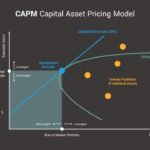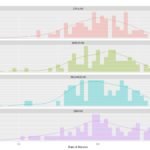How to do accurate Cointegration Analysis using R Programming Language
Cointegration is a statistical concept used in time series analysis, particularly in econometrics and financial modeling. It involves analyzing a vector of time series data, denoted as yt, where each element represents an individual time series, such as the price evolution of different financial products. Also, read Understanding Factor Investing and Principal Component Analysis The formal definition of cointegration is as follows: The n×1 vector yt of time series is said to be cointegrated if: In simpler terms, cointegration implies that even though individual time series may appear as random walks (non-stationary), there is an underlying force or relationship that binds them together in the long run, making their combination stationary. An example of cointegration can be illustrated with two-time series, xt and yt, where: In this example, both xt and yt individually appear to be random walks, but there is a cointegrating relationship between them, given by zt=yt−γxt, which is stationary. The process of testing for cointegration typically involves the following steps: Cointegration has practical applications in trading strategies, particularly in pairs trading or statistical arbitrage. When two cointegrated series have a spread that deviates from their historical mean, traders can profit by selling the relatively expensive one and buying the cheaper one, expecting the spread to revert to its mean. Statistical arbitrage encompasses various quantitative trading strategies that exploit the mispricing of assets based on statistical and econometric techniques, not necessarily tied to a theoretical equilibrium model. These strategies rely on identifying and capitalizing on deviations from expected relationships between assets. Practical Application in Stock Trading Cointegration has practical applications in stock market trading strategies, particularly in pairs trading or statistical arbitrage. Here’s how it works: This concept is known as statistical arbitrage, which exploits the relative mispricing of assets based on statistical and econometric techniques, rather than relying on theoretical equilibrium models. Performing Cointegration Tests in R Now, let’s explore how to perform cointegration tests using the R language. We’ll demonstrate this by checking for cointegration between two stock prices. Here’s the R code for it: In this code, we first load the necessary R package ‘urca’ for cointegration tests. Then, we perform Augmented Dickey-Fuller (ADF) tests on the individual stock prices to check for unit roots. If both stocks are individually non-stationary, we create a linear combination and perform an ADF test on it to confirm cointegration. Also, read Understanding Real Estate Investment for Quants Conclusion Cointegration is a valuable tool in stock market analysis that helps us uncover hidden relationships between stocks and create profitable trading strategies. By using R language and cointegration tests, investors and traders can make more informed decisions and potentially profit from mispriced assets.
How to do accurate Cointegration Analysis using R Programming Language Read More »


